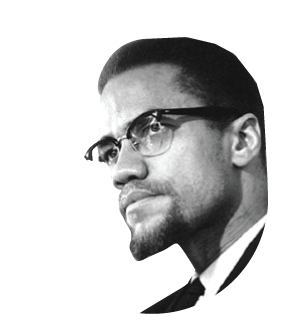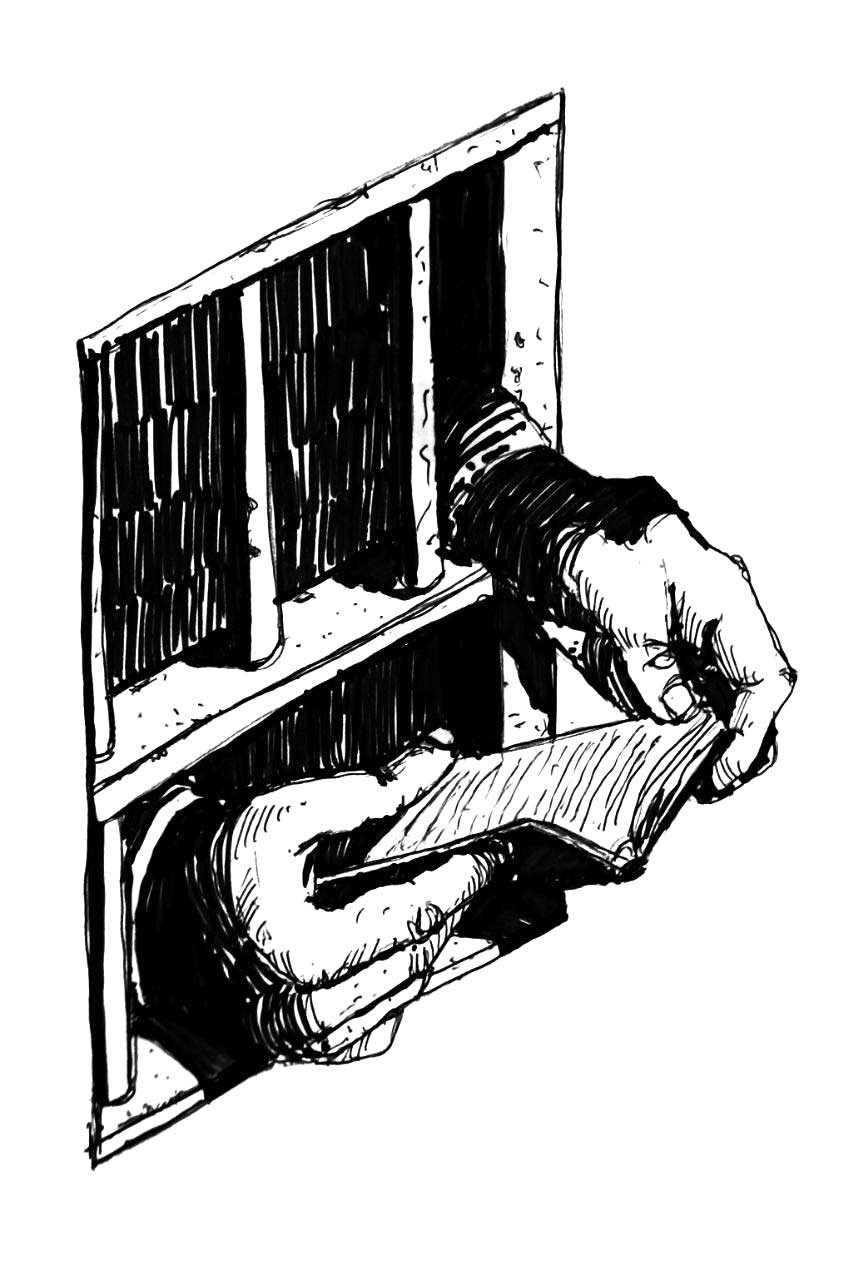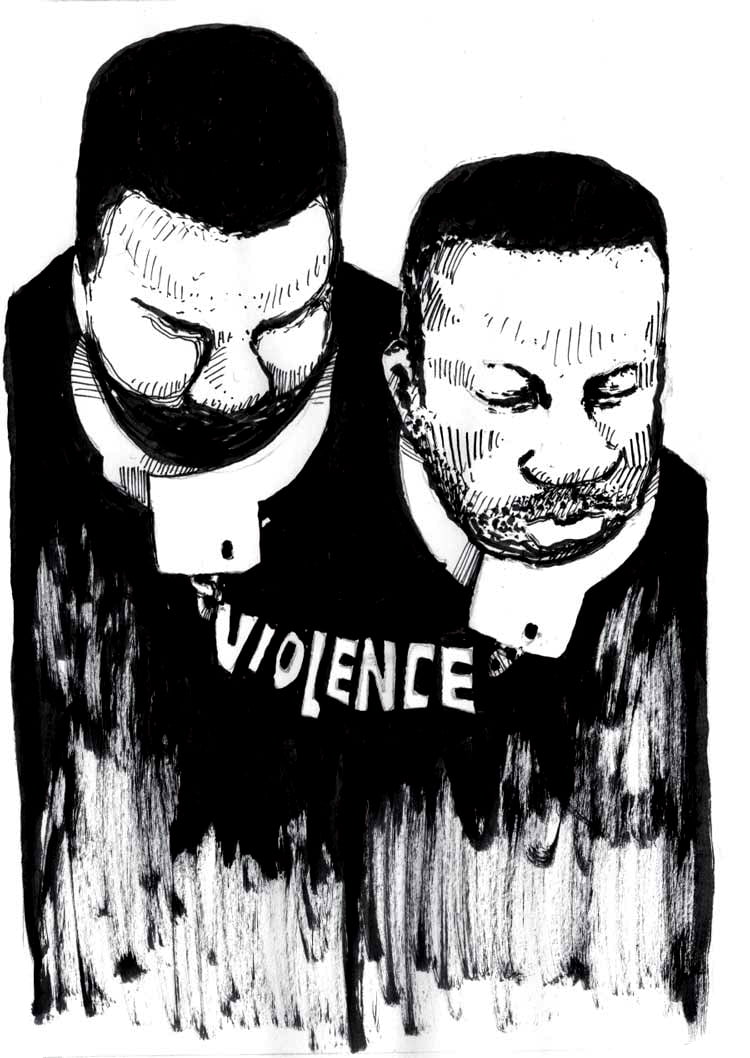On mass incarceration in the United States
By Michael “Safear” Ness*

«Don’t be shocked when I say I was in prison… You’re still in prison. That’s what America means – prison.» — Malcolm X
Malcolm X spent a decade of his life in prison. The Charleston jail, the Concord Reformatory and the Norfolk Prison Colony in Massachusetts to be exact. This shouldn’t come as a surprise to you, he would often say, because «America is prison.» [1]
Prison is a pillar of America’s system of social control. It is the key threat used to keep marginalized peoples subdued. Incarcerated people are almost always poor and disproportionately Black, Brown, and Indigenous.
In 2014, one in nine Black men in America between the age of 20 – 34 was incarcerated, a rate of imprisonment six times greater than white men. [2] As of 2020, there were a total of 2.3 million people incarcerated in America. [3]

With all of these people locked up, our communities must be safer, right?
Wrong. Rates of incarceration and prison construction have very little connection to actual incidents of crime.[4] Prisons have not been effective at preventing harm, but they have been effective in destabilizing communities and social movements. Only two or three people need to be removed to produce instability in a community of people who, when in the so-called free world, make, move, or care for things. [5]
Many people think it’s only «bad» people who go to prison. That’s simply not the case. Entering prison occurs as a result of a process called criminalization. Criminalization refers to the systems used to punish certain activities, behaviors, and people. In America, what constitutes crime changes according to time and place. Historically, Black slaves were criminalized by laws mandating they carry passes when leaving the plantation and prohibiting escape from servitude. Slave catchers tracked down runaway slaves, becoming the predecessors of modern police officers. The Jim Crow South in the US enacted loitering and vagrancy laws, making it illegal for people of color to both move around and stand still. [6]
Today, what is illegal in one state is perfectly legal in another. The same amount of drug possession in one city results in probation, while in another city leads to a prison sentence. Yet, no matter what city you’re in when the law is violated, it is the rich and powerful who escape punishment, while the poor are subjected to its full extent.
Criminalization disguises racism, normalizing the warfare against those who are subjected to its label: criminal. Because it’s not racist to be against crime, is it?

Former Chief of Staff for President Richard Nixon, H.R. Haldeman said, «The whole problem is really the blacks. The key is to devise a system that recognizes this while appearing not to.» [7]
Black, brown, and poor communities are left without adequate resources, forced to compete for the few available jobs, criminalized for this competition, placed under police occupation, then expected to live according to a standard set by white society. Ya’iyr Carter, an imprisoned Black activist said, «They raise us in pens called ghettos, slums, and projects. They build barriers around those pens and say, «Pull yourself up by your bootstraps. Get an education, a job.” Then they hunt you down while you’re jogging, or carrying Skittles, or sleeping on your bed…» [8]
To be labeled a criminal is to be dehumanized, stripped of humanity and excluded from the moral code applied to human beings. The criminal is then easily subjected to levels of violence and oppression which would cause moral outrage if used on an «actual person.» Being called a criminal has consequences. Prisoners and convicted felons are reduced to second-class citizenship such as losing the right to vote for years or for a lifetime. One in seven Black men in America is either temporarily or permanently disenfranchised. Felons face employment discrimination, housing discrimination, and exclusion from many public benefits. [9]
Just to be clear: this is systemic racism. These are some of the structures in place which privilege people based on race and wealth. A card shark might call it setting the deck, to put the cards in a certain order that, when dealt, gives an advantage to a select few while harming everyone else. Everyone knows this is cheating. America has been cheating for a long time. The question is, when will we start holding them accountable?
1. ”Message to the Grass Roots”, speech from Malcolm X. Revisado el 6 de enero de 2021 en http://www.csun.edu/~hcpas003/grassroots.html.
2. Rethinking the American Prison Movement – Dan Berger & Toussant Lossier
3. Mass Incarceration: The Whole Pie 2020.
4. Rethinking the American Prison Movement
5. Golden Gulag – Ruth Wilson Gilmore
6. Dark Matters – Simone Browne
7. A New Jim Crow Article (Ohio Journal of Criminal Law) – Michelle Alexander
8. “Cannibals”, In The Belly Journal – Ya’iyr Carter
9. A New Jim Crow Article
*Michael “Safear” Ness (he/him) is a white/Mexican Muslim practicing prison abolition at SCI Fayette in Pennsylvania. Safear grew up in Philadelphia and has spent all of their adult life under various forms of carceral supervision. Although he is held captive, he has transformed his cell into a learning center. Education is now his weapon of resistance.
Utopix has an ongoing collaboration with the Imprisoned Abolitionist Collective (IAC) to produce content on past and present struggles to be distributed in US prisons. The IAC is a group of incarcerated people dedicated to exposing and fighting against the oppressive prison industrial complex in the US.
Text: Michael Safear Ness (IAC); Artwork: Forastero LPA.